- What Is a Cold Sore?
- Clinical Note:
- What Is Herpes?
- Cold Sores vs Herpes: Key Differences and Similarities
- Is a Cold Sore an STD?
- How Are Cold Sores and Herpes Diagnosed?
- Modern Treatment: Suppression Only
- Integration Is Needed
- Ayurvedic Cure: Healing the Root Cause
- Prevention and Lifestyle Tips: Western Gaps and Ayurvedic Mastery
- Long-Term Complications if Herpes Is Left Untreated
- Frequently Asked Questions (FAQs)
- Reference
- I. All Refrences
- II. All Refrence
Here’s Why the Confusion Exists.
The topic Cold Sores vs Herpes often sparks misunderstanding—many assume they’re entirely different conditions. In reality, cold sores are a visible symptom of the herpes simplex virus (HSV), typically HSV-1. According to the World Health Organization, over 3.7 billion people under age 50 are infected with HSV-1 globally [1]. Yet most individuals don’t realize that their cold sore is actually a form of oral herpes.
The confusion stems from how we label and perceive the word “herpes.” While genital herpes (often caused by HSV-2) carries a heavy stigma, cold sores are socially accepted and often seen as minor. This false divide in public understanding leads many to ignore the viral nature of cold sores—and the potential risks of transmission.
Understanding the full picture of cold sores vs herpes is not just about definitions—it’s about recognizing the underlying virus, how it spreads, and what it means for long-term health. While modern medicine offers antiviral suppression, Ayurveda takes a root-cause approach. It treats cold sores and herpes as interconnected expressions of deeper imbalances in Doshas (body energies), Dhatus (tissues), and Ojas (immunity).
This article explores the scientific connection between cold sores and herpes, their differences and similarities, diagnostic options, and most importantly—how Ayurvedic medicine can eliminate the virus rather than just managing its symptoms.
What Is a Cold Sore?
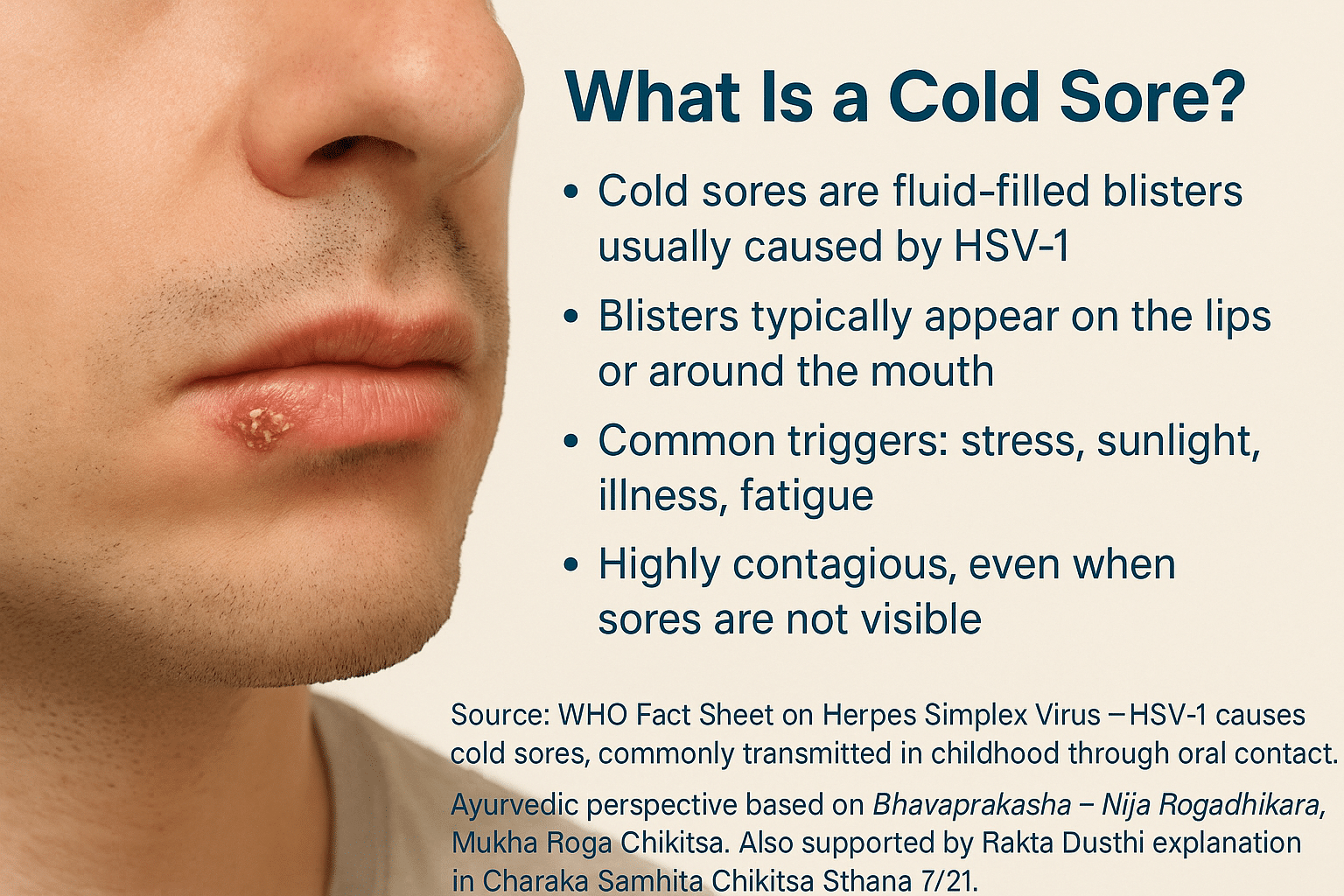
Cold sores are fluid-filled blisters usually caused by HSV-1, and they’re more serious than they appear. Cold sores—also called fever blisters—are small, painful lesions that usually appear around the lips, mouth, or nose. While they may seem minor, they are in fact one of the most visible symptoms of herpes simplex virus type 1 (HSV-1). In some cases, they can also be caused by HSV-2, particularly through oral-genital contact [2].
Key Points of a Cold Sore:
- Initial symptoms: Tingling, itching, burning before the blister appears
- Blister stage: Red, swollen bumps that become fluid-filled and painful
- Crusting phase: Blisters burst, dry out, and form a yellow-brown crust
- Healing: Usually clears within 7–10 days without scarring
Cold sores are highly contagious, especially during the blister and crusting stages. However, asymptomatic shedding—when the virus is spread without visible symptoms—makes them dangerous even when no sores are present [1].
Common Triggers:
- Physical or emotional stress
- Hormonal changes (e.g., menstruation)
- Fever or respiratory illness
- Excessive sun exposure or windburn
- Immune suppression (e.g., post-viral fatigue)
Ayurvedic Understanding of Cold Sores
In Ayurveda, cold sores align with Mukha Daha (burning in the mouth), Utsanna Vrana (raised wound), and Rakta Dushti (vitiation of blood tissue). They are typically classified as a Pitta-Rakta disorder, where excess heat in the blood manifests externally during lowered immunity or stress [2].
Cold Sores as a Sign of:
- Pitta aggravation: Seen in burning, inflammation, and redness
- Rakta Dushti: Impure blood due to toxins (Ama) or viral burden
- Srotas dushti: Blockage in microchannels of the skin (Tvak) and mucosa (Mukha srotas)
Clinical Note:
Although cold sores are self-limiting in healthy individuals, frequent recurrences may indicate poor immune resilience and chronic viral latency. This opens the gateway for Ayurvedic Rasayana therapy, which targets both systemic immunity and local viral load.
What Is Herpes?
Herpes as a Systemic Viral Infection
Herpes is a chronic viral condition caused by the herpes simplex virus (HSV), classified into two major types—HSV-1 and HSV-2. HSV-1 is primarily responsible for oral herpes, including cold sores around the mouth, but it has increasingly been identified in genital infections due to oral-genital transmission. HSV-2, on the other hand, more commonly causes genital herpes and is known for its higher rates of recurrence and asymptomatic viral shedding [3].
How the Herpes Virus Functions
Once the virus enters the body through mucosal membranes or broken skin, it establishes a lifelong presence. It travels through sensory nerves and becomes dormant in nerve ganglia—most commonly the trigeminal ganglion in oral herpes and the sacral ganglia in genital herpes. This latency phase allows the virus to remain undetected by the immune system. When triggered by factors such as stress, sunlight, hormonal shifts, or immune suppression, the virus reactivates and travels back to the skin, causing recurrent lesions or asymptomatic shedding [4].
Globally, over 67% of people under the age of 50 are infected with HSV-1, while about 13% are infected with HSV-2 [5]. The majority of infections remain unrecognized due to the absence of noticeable symptoms or misattribution to other minor skin conditions.
Ayurvedic Interpretation of Herpes
In classical Ayurveda, herpes is interpreted through the lens of systemic imbalance, primarily involving aggravated Pitta and Kapha Doshas. The condition affects multiple tissues (Dhatus)—notably Rasa (plasma), Rakta (blood), and Mamsa (muscle)—and disrupts important bodily channels (Srotas), particularly Tvak (skin), Shukra (reproductive tissue), and Majja (nervous system).
The condition is often associated with disease categories such as Upadansha (venereal ulcers), Pittaja Visarpa (spreading inflammatory lesions), or Krimi Janya Twak Vikara (viral/parasitic skin disorders). These descriptions appear in texts such as Charaka Samhita Chikitsa Sthana, where such conditions are classified under endogenous imbalances (Nija Rogas) due to internal vitiation of Doshas and accumulation of Ama (toxins) (([All Refrence][Kumar, A., & Choudhary, R. (2021). Ayurvedic strategies in management of viral diseases. Journal of Ayurveda and Integrative Medicine, 12(2), 312–320. https://doi.org/10.1016/j.jaim.2020.05.007]).
Clinical Relevance
While modern antivirals can reduce outbreaks and viral load temporarily, they do not eliminate the latent virus from the body. Ayurveda adopts a more integrative path—targeting the root cause through detoxification (Shodhana), immune modulation, and Rasayana therapy. The goal is not just viral suppression, but the rejuvenation of Dhatus, restoration of Ojas, and complete elimination of the disease origin.
Cold Sores vs Herpes: Key Differences and Similarities
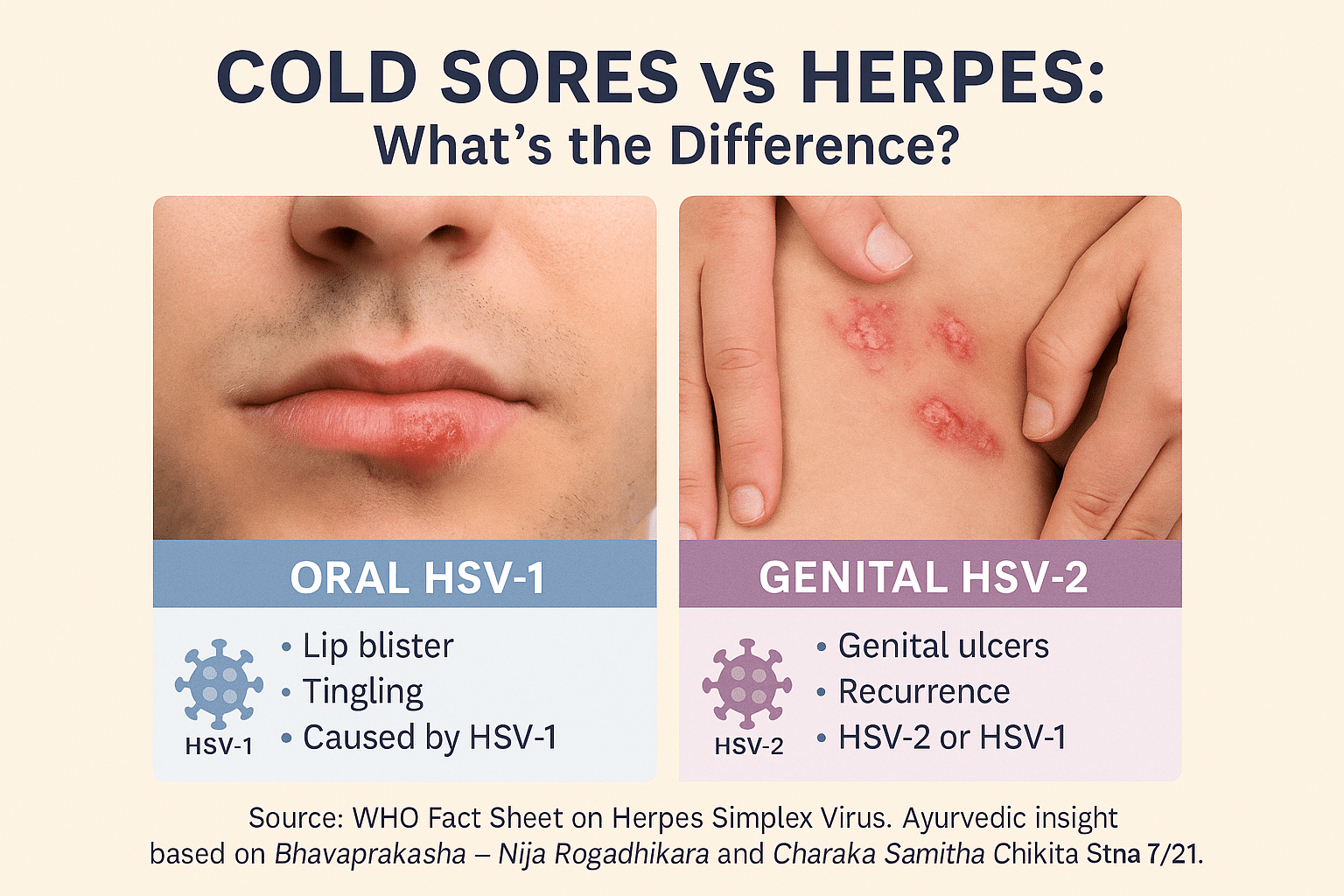
Understanding the Overlap
Many people wonder whether cold sores and herpes are the same thing. The short answer is: cold sores are a form of herpes, typically caused by HSV-1. However, herpes as a condition includes both oral and genital infections, caused by either HSV-1 or HSV-2. While they share many features, understanding their differences is essential for diagnosis, prevention, and treatment [6].
Location and Transmission
Cold sores usually appear around the lips, mouth, or nose, often acquired in childhood through kissing or shared utensils. Genital herpes, more often caused by HSV-2, is transmitted through vaginal, anal, or oral sex. However, HSV-1 can also be transmitted through oral-genital contact, resulting in genital herpes. This cross-transmission has become increasingly common among younger adults [7].
Symptoms and Recurrence
Both forms of herpes present with similar symptoms during outbreaks: burning, tingling, blisters, and ulceration. HSV-2 tends to recur more frequently and cause more severe outbreaks in the genital area, while HSV-1 recurs less often and is milder in genital presentations. Both types can spread even when no visible sores are present, due to asymptomatic shedding [8].
Social Perception and Stigma
One of the biggest differences is public perception. Cold sores are seen as harmless or normal, whereas genital herpes is highly stigmatized. This creates confusion and emotional distress, despite the fact that the underlying virus is the same family. Lack of awareness contributes to underreporting and misdiagnosis [9].
Ayurvedic Comparison
In Ayurveda, the classification doesn’t differentiate based on location but rather on Dosha imbalance and the depth of tissue involvement. Oral and genital lesions with similar pathogenesis are treated as different expressions of the same Krimi (pathogenic entity), involving Pitta, Rakta, and Mamsa Dhatus. Whether it presents as a cold sore or genital ulcer, the underlying pathology includes heat, inflammation, and immune dysregulation. The aim is to purify the Rakta, restore Srotas, and enhance Ojas [10].
Is a Cold Sore an STD?
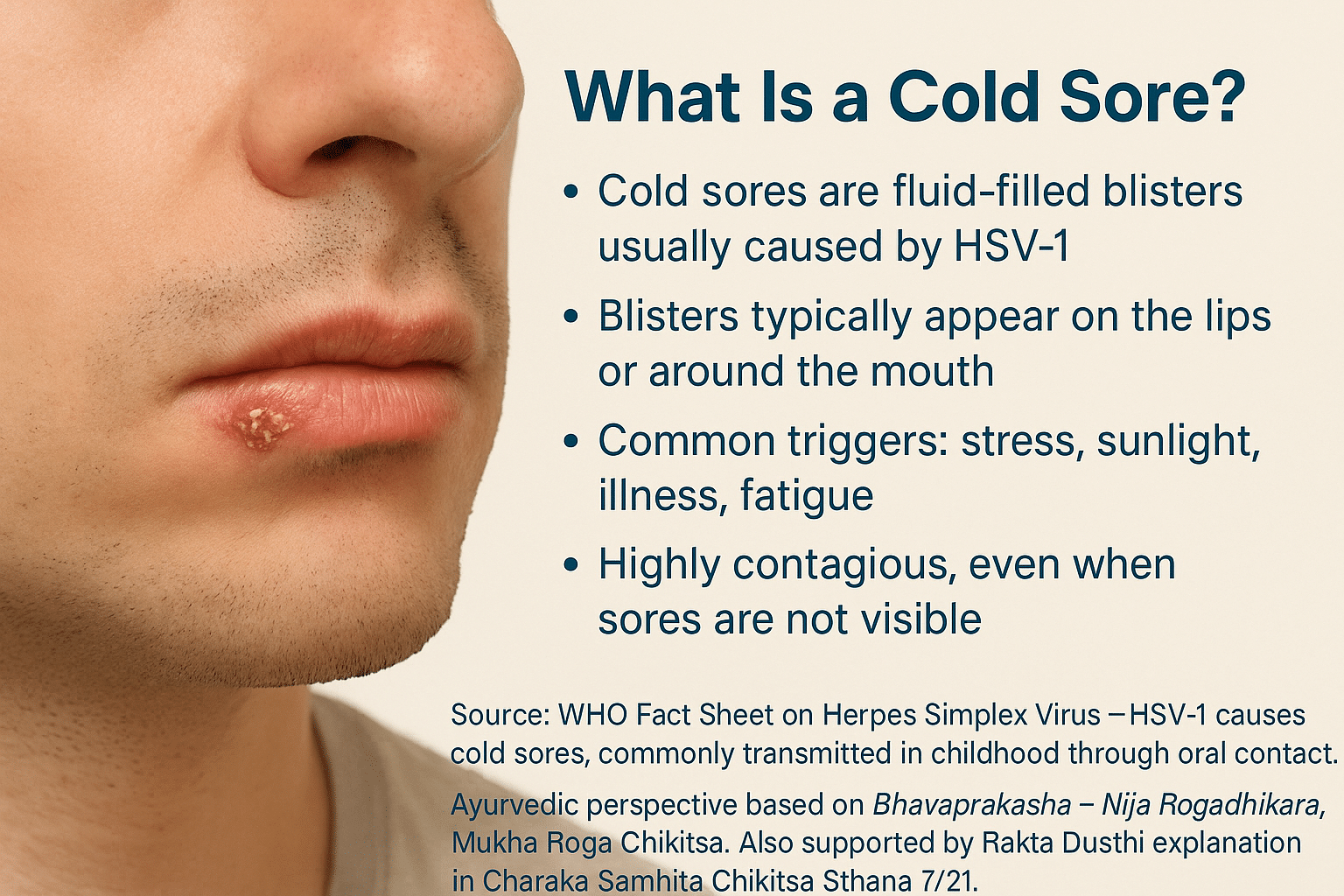
Why the Term “STD” Causes Confusion
A common question patients ask is whether a cold sore qualifies as a sexually transmitted disease (STD). While cold sores are usually caused by HSV-1, and are often transmitted through non-sexual contact such as kissing or sharing utensils, they are still caused by the herpes virus, which can also be sexually transmitted [11]. So the distinction lies not in the virus itself—but in the mode of transmission.
Oral Transmission vs Sexual Transmission
HSV-1 is typically spread through oral contact, often in childhood. This makes cold sores socially accepted and rarely associated with sexual activity. However, HSV-1 can also be spread to the genital area during oral sex, causing genital herpes. In such cases, even though the virus type is the same, the transmission mode categorizes it as an STD [12].
Similarly, HSV-2 is almost always transmitted sexually and is the leading cause of genital herpes. If a person with genital HSV-2 gives oral sex to another person, they can, in rare cases, transmit the virus back to the mouth. The cycle is bi-directional depending on the contact and site of infection.
Asymptomatic Shedding and Silent Transmission
One of the main concerns with classifying herpes strictly as an STD is the fact that the virus can be spread even when no visible sores are present. This is called asymptomatic shedding, and it occurs in both HSV-1 and HSV-2. Studies show that over 70% of genital herpes infections are transmitted by individuals who had no idea they were contagious at the time [13].
Ayurvedic Viewpoint on Classification
In Ayurveda, disease classification doesn’t rely on sexual vs non-sexual transmission. Instead, it is based on internal pathogenesis, Dosha imbalance, and the level of Dhatu contamination. Whether acquired through sexual activity or not, cold sores and genital herpes are viewed as manifestations of underlying Rakta Dushti, weakened immunity (Ojas), and the proliferation of Krimi (pathogenic organisms).
Thus, both conditions are considered systemic and need treatment beyond symptom control, focusing on purification, immune modulation, and Rasayana rejuvenation.
How Are Cold Sores and Herpes Diagnosed?
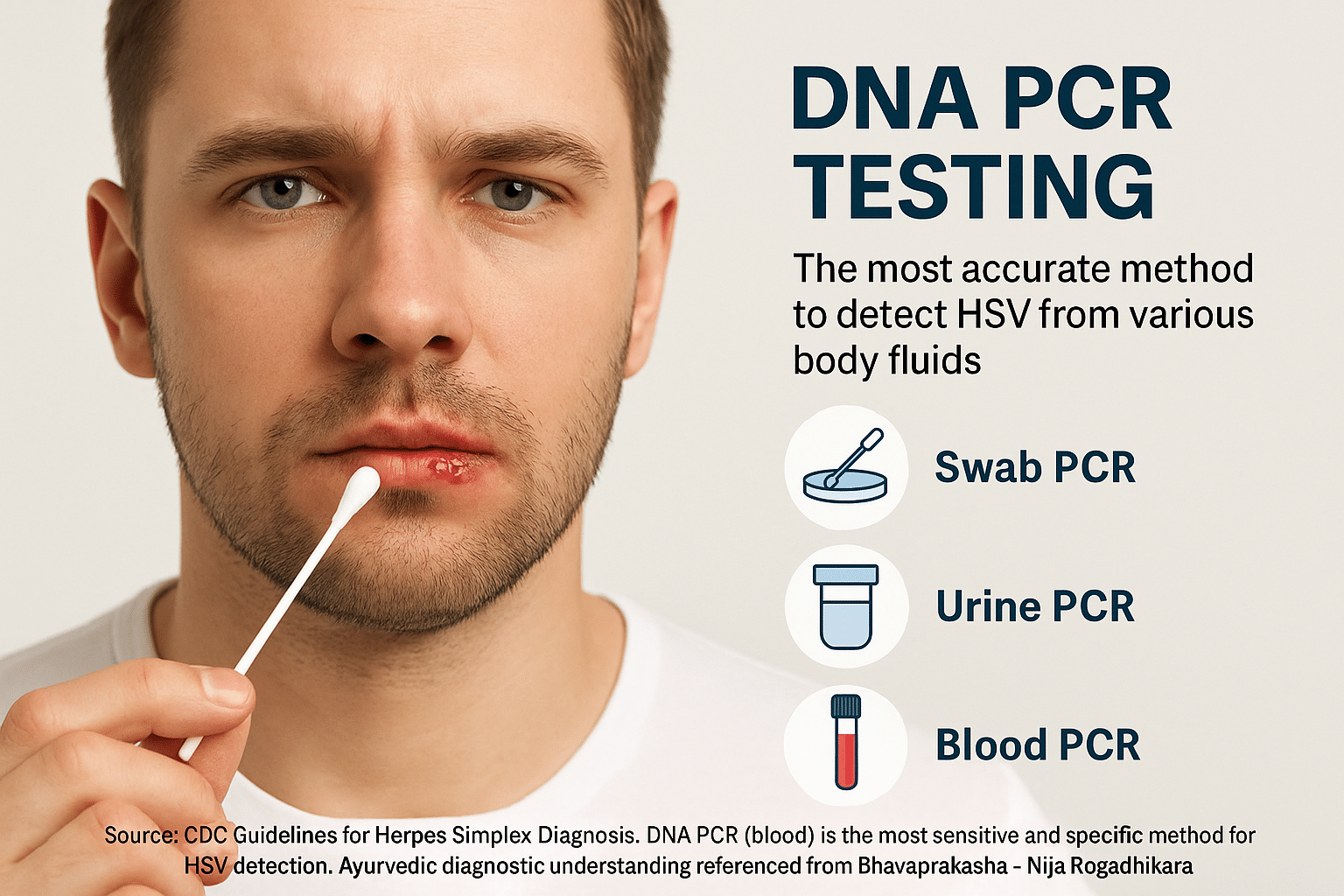
Clinical Signs Are Not Always Enough
Cold sores and herpes lesions often follow a recognizable pattern, but visual diagnosis alone is not always reliable—especially when symptoms are mild, atypical, or entirely absent. This makes laboratory testing essential for confirmation, particularly in the case of genital herpes or when long-term management decisions are involved [14].
DNA PCR Testing: The Most Accurate Diagnostic Method
The DNA PCR (Polymerase Chain Reaction) test is currently the most accurate and sensitive method for diagnosing herpes simplex virus infections. This test detects the presence of HSV DNA, whether type 1 or type 2, from various body fluids.
- Swab PCR: Taken directly from a blister or ulcer during an outbreak, this is useful in acute cases.
- Urine PCR: Helpful when lesions are not visible or located inside the urethra or cervix.
- Blood PCR: This is the most accurate for detecting latent or systemic infections, especially in asymptomatic individuals. It can identify the virus even when no external lesions are present [18].
Unlike antibody-based tests, DNA PCR confirms active viral presence, not just prior exposure.
Why IgM and Some Serology Tests Can Be Misleading
Many commercial labs offer IgG and IgM antibody tests to detect immune response to HSV:
- IgG tests can show past exposure and help differentiate between HSV-1 and HSV-2, but do not confirm current infection status or site (oral vs genital).
- IgM tests are highly unreliable. They often cross-react with other herpes viruses and may yield false positives. Despite this, many labs promote IgM to earn profit, even though global guidelines do not recommend it for herpes diagnosis [15].
Outdated Methods
Older methods like viral culture and Tzanck smear are now rarely used due to poor sensitivity and accuracy. Cultures may fail to detect the virus if the sore has begun healing, and smear tests lack the specificity needed for modern diagnostics.
Ayurvedic Diagnostic Approach
In Ayurveda, diagnosis is based on clinical observation and constitution-based analysis rather than lab tests:
- Nadi Pariksha (pulse reading) reveals underlying Dosha imbalance and immune depletion.
- Lesion examination looks for heat, redness, oozing, and cyclic reactivation to determine Pitta and Rakta Dushti.
- History taking (Prashna) includes assessment of stress, lifestyle, digestion, and sexual history.
- Srotas assessment identifies which bodily channels are affected—Tvak (skin), Rakta (blood), or Shukra (reproductive tissues).
Best Approach: Combine Both
Using DNA PCR blood testing for clinical confirmation, alongside Ayurvedic terrain analysis for personalized treatment, offers the most comprehensive diagnosis. PCR tells you if the virus is there. Ayurveda tells you why it is reactivating—and how to eliminate it from the root.
Thus, both conditions are considered systemic and need treatment beyond symptom control, focusing on purification, immune modulation, and Rasayana rejuvenation.
Modern Treatment: Suppression Only
Antiviral Drugs Are the Primary Approach
In modern medicine, herpes is treated primarily through antiviral medications, which aim to suppress viral replication and reduce the severity and duration of outbreaks. The most commonly prescribed drugs include Acyclovir, Valacyclovir, and Famciclovir. These can be administered during active outbreaks (episodic treatment) or taken daily to prevent recurrences (suppressive therapy) [16]
These medications work by interfering with the viral DNA polymerase enzyme, slowing the replication of HSV in the body. However, they do not eliminate the virus from the nerve ganglia, where it remains latent. Once medication is stopped, the virus can reactivate under stress, fatigue, or immune suppression [21].
Limitations of Antiviral Therapy
Despite being effective in reducing symptoms, antiviral medications do not cure herpes. They have several key limitations:
- Latency remains untouched: The virus hides in the dorsal root ganglia (nerve clusters), which antivirals cannot access.
- Viral resistance risk: Long-term use can lead to resistant HSV strains, particularly in immunocompromised patients [22].
- Side effects: These include nausea, headaches, fatigue, and in some cases, kidney stress (especially with high doses of acyclovir).
- Cost and accessibility: Continuous suppressive therapy becomes financially and emotionally draining for many patients.
Ayurvedic Critique of Symptom-Based Suppression
From an Ayurvedic perspective, merely suppressing symptoms without addressing the root cause is incomplete treatment. Herpes is seen as a Rakta–Pitta–Ojas disorder involving viral load buildup, immune compromise, and tissue-level weakness.
Classical texts criticize treatments that “cool the fire without removing the fuel”—that is, temporarily reducing inflammation (blisters) while leaving behind the root pathology (viral latency and poor immunity). Modern antiviral suppression is akin to Avrana Chikitsa—masking the disease but not destroying its seed (Beeja) [23].
Integration Is Needed
While modern antivirals may play a role in emergency relief or in immunocompromised individuals, true long-term management requires a root-cause strategy. This is where Ayurveda excels—by combining detoxification (Shodhana), antiviral herbs (Krimighna Dravyas), Rasayana therapy, and Ojas restoration to attempt viral eradication rather than lifelong drug dependence.
Ayurvedic Cure: Healing the Root Cause
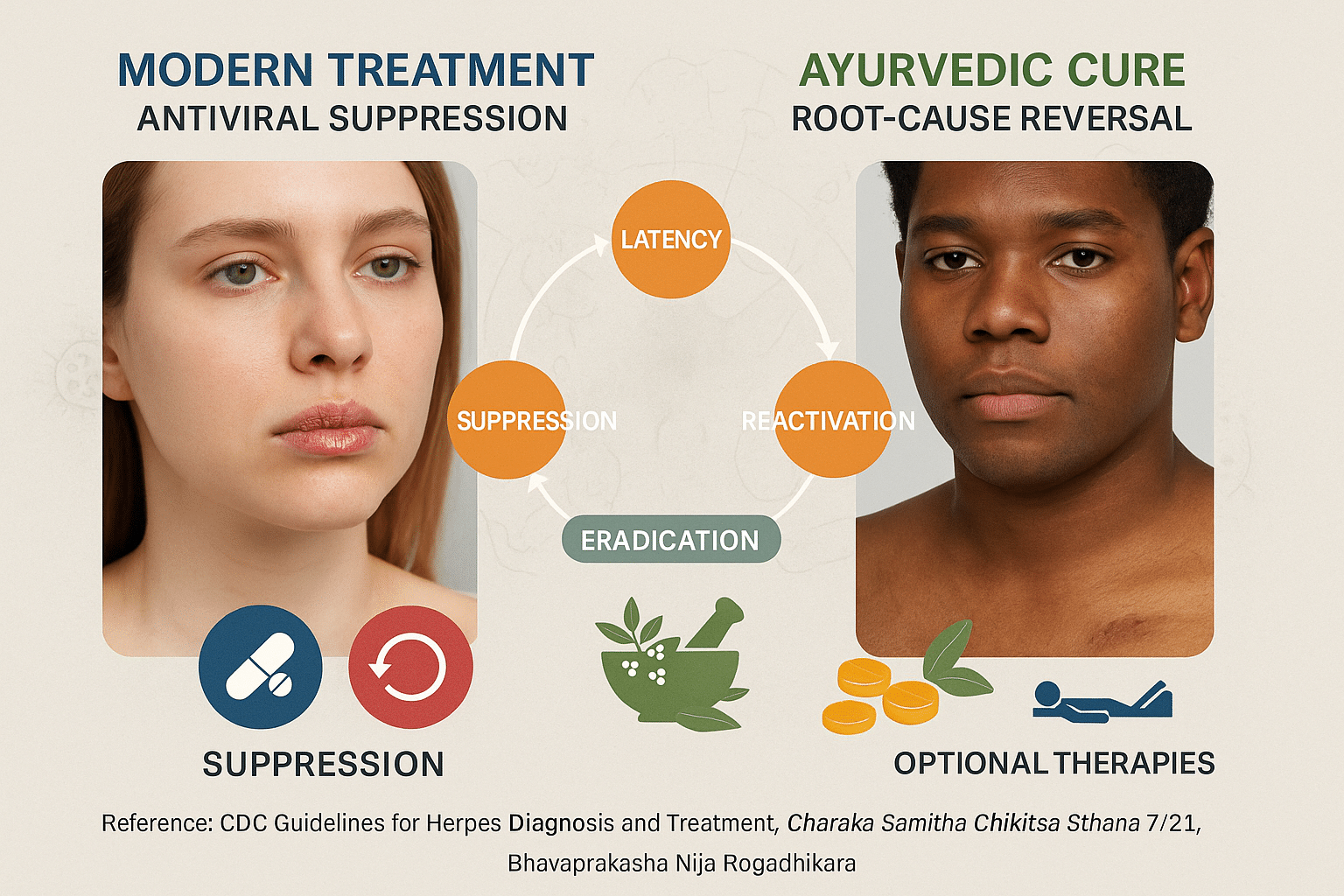
Treating the Terrain, Not Just the Symptoms
Unlike modern medicine, which focuses on controlling outbreaks, Ayurveda addresses the internal ecosystem that allows the herpes virus to reactivate. The goal is not only to reduce symptoms but to eliminate the virus’s ability to survive within the host. This is achieved by restoring Dosha balance, cleansing Dhatus, correcting Srotas flow, and enhancing Ojas—the body’s innate immunity and vitality [24].
Ayurvedic Classification of Herpes
Herpes—whether oral or genital—is recognized in Ayurveda under various classical terms, depending on its manifestation:
- Upadansha: Described in Bhavaprakasha as an ulcerative condition involving vitiation of Rakta (blood) and Shukra (reproductive tissue)
- Pittaja Visarpa: A fiery, spreading lesion due to aggravated Pitta and Rakta
- Krimi Janya Twak Vikara: Skin disorders caused by invisible pathogenic organisms (Krimi), predating modern microbiology [25]
The Ayurvedic pathology involves multiple Doshas (primarily Pitta and Kapha), affecting Rasa, Rakta, and Mamsa Dhatus, and disturbing the Tvak, Rakta Vaha, and Shukra Vaha Srotas.
Step 1: Shodhana (Optional Panchakarma Detoxification)
Note: Panchakarma therapies are entirely optional and are used only when needed, based on patient strength, stage of disease, and affordability.
Optional internal cleansing therapies include:
- Virechana (purgation): Clears excess Pitta and purifies blood, especially in patients with recurrent blistering
- Raktamokshana (bloodletting): Used in some classical herpes protocols for highly aggravated Rakta Dushti
- Basti (enema): Recommended for deep-seated or chronic viral latency involving Vata
These procedures are always preceded by Snehana (internal oleation) and Swedana (steam therapy) to prepare the tissues for expulsion. If Panchakarma is not feasible or indicated, oral detoxification protocols using herbs and minerals are prescribed instead [26].
Step 2: Krimighna and Rasayana Therapy
Once the body is cleared of toxins (with or without Panchakarma), Ayurvedic physicians introduce antiviral and immune-rebuilding therapy:
- Gandhak Rasayan: A purified sulfur Rasayana with antiviral, detoxifying, and rejuvenating properties
- Neem and Kalmegh: Classical Krimighna (antiparasitic/antiviral) herbs that cleanse Rakta and regulate Pitta
- Bhumyamalaki and Haridra: Support liver function, immunity, and antiviral response
- Swarna Bhasma and Heerak Bhasma (Gold and Diamond Calx): Used in trace quantities to regenerate tissues and modulate immune memory against reactivation [27]
Step 3: Ojas Restoration and Lifestyle Correction
The herpes virus tends to reactivate in individuals with depleted Ojas. Ayurveda places strong emphasis on rebuilding immunity through:
- Rasayana formulations: Like Chyawanprash, Brahma Rasayan, and Amalaki Rasayana
- Medhya Rasayanas: Brahmi, Shankhpushpi, and Ashwagandha support stress resilience and nervous system recovery
- Dinacharya (daily routines): Includes waking, eating, and sleeping on time to stabilize hormonal and immune function
This combination of antiviral herbs, rejuvenation protocols, and optional detox therapies gradually strengthens the immune terrain, reduces outbreak frequency, and in many cases, eliminates viral reactivation over time.
Prevention and Lifestyle Tips: Western Gaps and Ayurvedic Mastery
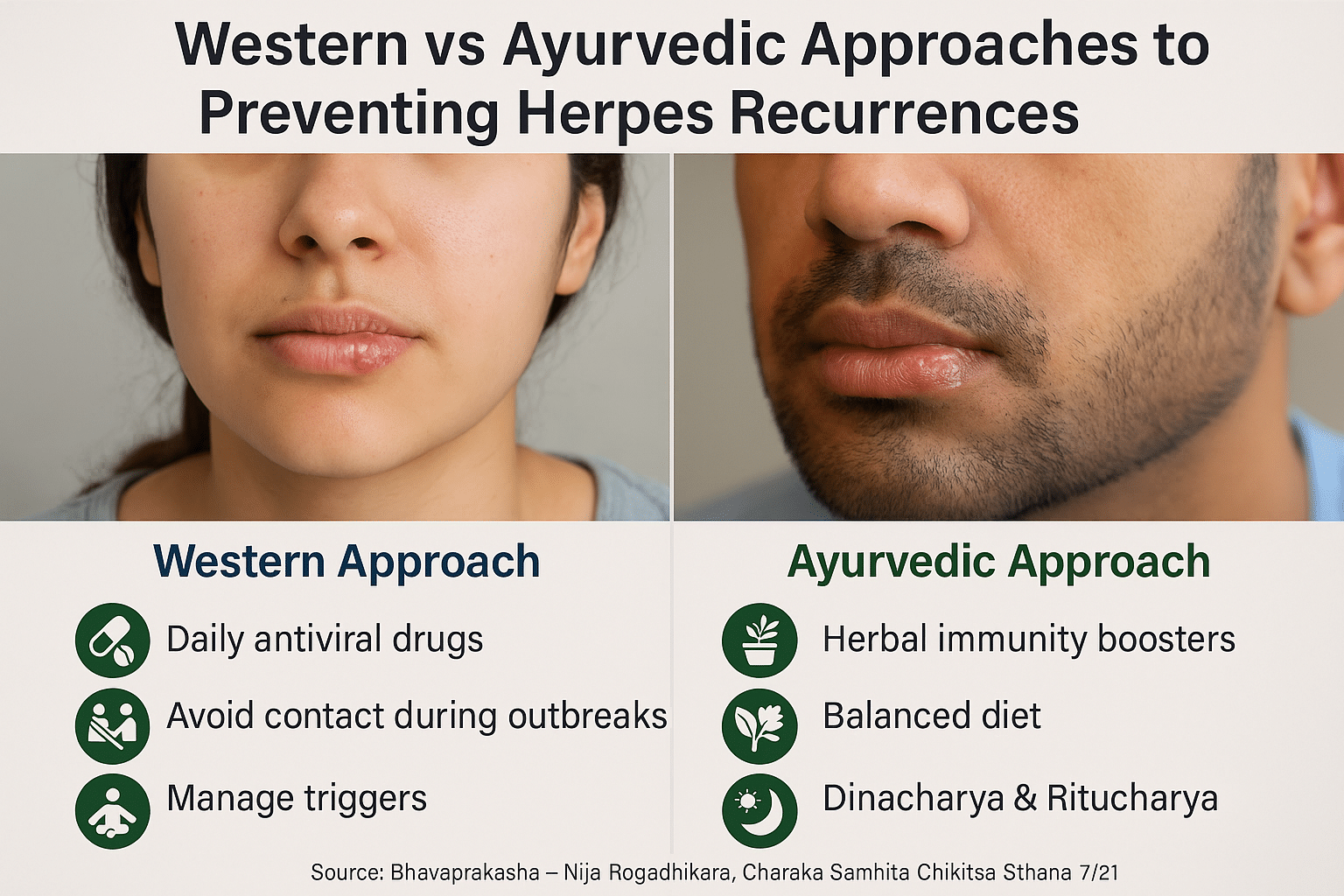
Why Suppressive Antivirals Are Not the Solution
Modern medicine suggests daily suppressive antiviral therapy such as Valacyclovir or Acyclovir to prevent recurrence and transmission. However, this approach:
- Does not remove the virus from the dorsal root ganglia
- Alters the immune system’s natural response by blunting viral expression
- Leads to long-term toxicity including liver stress, renal burden, neurological side effects, and drug resistance
- Creates psychological dependence where patients feel unsafe without daily pills [28]
In the Ayurvedic view, this is equivalent to Stambhana Chikitsa—a form of palliation that halts symptoms but aggravates the underlying Dosha imbalance, driving the disease deeper into the Srotas (channels) and Dhatus (tissues) [29].
The Ayurvedic Philosophy of Prevention: Correcting the Terrain
Prevention in Ayurveda is not about blocking viral activation but restoring internal balance so the virus has no fertile ground to express itself. This is done by strengthening Agni (digestive fire), maintaining Dhatu Shuddhi (tissue purity), and protecting Ojas (vital essence of immunity).
Key Ayurvedic principles include:
- Nidana Parivarjana: Absolute avoidance of causative factors such as stress, incompatible foods, excessive sexual activity, and heat exposure. This is the first and most important principle outlined in Charaka Samhita Sutra Sthana 1/24
- Rakta Prasadaka Aharas: Foods that cool and purify blood (e.g., Amalaki, pomegranate, bottle gourd, coriander, and coconut water)
- Agni Deepana and Ama Pachana: Daily use of herbs like Trikatu, ginger, and cumin to maintain digestive strength and prevent toxic buildup
- Shamana Therapy for Pitta and Rakta Dushti: Use of herbs such as Guduchi (Tinospora cordifolia), Chandana (Santalum album), and Sariva (Hemidesmus indicus) which are classically indicated in Pittaja Kushtha and blood disorders [30]
Rasayana and Viral Memory Reset
According to Charaka Samhita Chikitsa Sthana 1/1, Rasayana therapy is the ultimate strategy for rejuvenation, memory correction at the cellular level, and viral resistance. This includes:
- Gandhak Rasayan: Rejuvenates skin, blood, and immunity while neutralizing Krimi
- Brahma Rasayana and Chyawanprash: Rebuilds Ojas and strengthens all seven Dhatus
- Swarna Bhasma, Heerak Bhasma, and Abhrak Bhasma: Activate subtle immunity (Vyadhikshamatva) and viral latency clearance via Nanodravya Karma [31]
The usage of Rasayanas must be patient-specific, based on their Prakriti (constitution), viral burden, and Dhatu involvement. These medicines reprogram cellular memory, cleanse Srotas, and restore Bala (inner strength).
Dinacharya: Daily Rhythm for Disease Immunity
Ayurveda’s prevention isn’t just herbal—it includes daily and seasonal living protocols to synchronize the body with nature’s healing rhythm. As outlined in Ashtanga Hridaya Sutra Sthana 2/1–5, key recommendations are:
- Wake by Brahma Muhurta (~4:30–5:00 AM)
- Abhyanga (oil massage): Daily use of warm sesame or coconut oil to stabilize Vata and boost skin-barrier immunity
- Nasya (nasal oiling) with Anu Taila or Shadbindu Taila to prevent viral entry through nasal passages
- Dhoomapana (herbal smoke inhalation) using herbs like Haridra and Guggulu to purify upper respiratory tract
- Triphala at night to cleanse intestines and regulate Pitta-Vata
- Avoid afternoon naps, sexual indulgence during high Pitta periods, and hot spicy foods in summer
These practices reduce the frequency of recurrence and build Vyadhikshamatva (resistance to disease) [32].
Emotional Regulation and Satvavritta
Mental health is inseparable from herpes reactivation. Classical texts like Charaka Sharira Sthana 1/102 emphasize Sattva (mental clarity) as a pillar of disease prevention. Ayurveda offers:
- Medhya Rasayanas: Brahmi, Mandukaparni, Shankhapushpi for calming the nervous system
- Pranayama and meditation: Daily practice of Nadi Shodhana and Bhramari to reduce cortisol, cool the brain, and prevent immune suppression
- Avoiding Asatmya Indriyartha Samyoga: Avoiding overindulgence of senses and addictive behaviors that disturb the mind
Long-Term Complications if Herpes Is Left Untreated
The Silent Progression of Viral Latency
Herpes simplex virus is often underestimated because many of its carriers remain asymptomatic. However, chronic latency without appropriate intervention—especially immune-restorative or antiviral detoxification—can allow the virus to progressively impact multiple organ systems. Unlike acute infections, HSV quietly resides in the nerve ganglia, reactivating under specific triggers. If untreated, these subclinical reactivations accumulate over time, leading to immunological fatigue, inflammation, and degeneration of key bodily tissues. This risk is particularly elevated in those with compromised immunity, hormonal imbalances, stress-induced exhaustion, or poor metabolic resilience.
Chronic Reactivation and Neural Involvement
One of the most overlooked consequences of untreated herpes is cumulative nerve involvement, especially in cases of genital HSV-2. Each reactivation episode involves the sacral or trigeminal ganglia, and repeated inflammatory cycles eventually begin to damage the nerve pathways themselves. This leads to neurogenic pain, burning sensations along the sciatic or pelvic nerves, and persistent hypersensitivity of the skin, known in clinical settings as post-herpetic-like neuralgia. Patients may experience phantom tingling, cold flashes, or crawling sensations without any visible sores. From an Ayurvedic view, this reflects progressive Majja Dhatu Dushti and Vata-predominant vitiation of Majjavaha Srotas, a condition requiring deep Rasayana and neuro-restorative therapy.
Ocular Herpes and Herpetic Keratitis
When HSV reactivates in the ophthalmic branch of the trigeminal nerve, it can invade the eye, causing herpes simplex keratitis. This leads to corneal ulcers, inflammation, and if recurrence continues, irreversible corneal scarring and partial or full blindness. Herpetic eye disease is one of the most common causes of infectious vision loss in developed countries. From an Ayurvedic perspective, this is understood as Alochaka Pitta Dushti in combination with Rakta Dhatu aggravation, leading to progressive degeneration of Drishti Srotas unless pacified and regenerated through targeted therapies.
Encephalitis, Aseptic Meningitis, and Central Nervous System Impact
Though rare, untreated herpes can cross into the central nervous system, especially during immune suppression, leading to herpes simplex encephalitis—a severe, potentially fatal condition that causes brain inflammation. More commonly, HSV-2 can cause chronic aseptic meningitis, particularly in women. Even in non-severe cases, long-standing HSV latency is increasingly associated with cognitive fatigue, memory loss, mood swings, and impaired mental focus, mimicking symptoms seen in chronic fatigue syndrome or autoimmune encephalopathy. In Ayurveda, such CNS complications are classified under Sannipata Jwara, Manovaha Srotas Dushti, and Majja-Sara Kshaya, indicating deep degenerative states affecting both mind and memory.
Reproductive Health Disruption and Sexual Dysfunction
In untreated genital herpes, the reproductive system gradually deteriorates under the burden of chronic inflammation, viral shedding, and tissue scarring. Women may experience cervical inflammation (herpetic cervicitis), pelvic pain, vaginal dryness, and even secondary infertility due to a hostile uterine environment. In men, recurrent episodes may mimic chronic prostatitis, with groin discomfort, pain after ejaculation, reduced libido, and erectile hesitation. These symptoms may arise even in the absence of visible sores, reflecting deep Shukra Dhatu Dushti and disturbed Shukravaha Srotas, leading to both physical and psychosexual trauma. If left uncorrected, this results in depleted Ojas, poor reproductive vigor (Beeja Shakti), and marital stress.
Viral Burden and Chronic Immune Suppression
HSV infection is not static—it modulates the immune system, keeping the host in a state of chronic low-grade inflammation. Over time, this weakens Vyadhikshamatva (disease resistance) and opens the door to co-infections such as Epstein-Barr Virus (EBV), Cytomegalovirus (CMV), Candida, HPV, or even opportunistic bacterial infections. Many untreated patients eventually report fatigue, hair loss, poor wound healing, and a slow recovery from other illnesses. This reflects Rasa, Rakta, and Ojas depletion, the hallmark of chronic viral invasion in classical Ayurvedic pathology. Additionally, HSV increases the risk of HIV acquisition and transmission, as the mucosal barrier is compromised and immune surveillance is diminished.
Psychological Toll and Emotional Isolation
The psychosocial impact of untreated herpes is profound. Patients often carry hidden shame, anxiety over disclosure, and fear of rejection in intimate relationships. The chronic anticipation of outbreaks, along with the invisible burden of transmission, creates long-term emotional exhaustion. In Ayurveda, this would be categorized under Satva Kshaya (loss of mental clarity), Rajo Dushti, and Manas Roga (emotional disorders). Without addressing this emotional dimension, even the best herbal treatments may fail to yield full results, as the body-mind axis (Deha–Manas Samyoga) is fractured.
Ayurvedic Conclusion
If left untreated, herpes transitions from a localized viral condition to a multi-systemic pathology affecting Dhatu layers, immune intelligence, neurological integrity, and reproductive strength. This progression aligns with the Ayurvedic concept of Vyadhi Sankara—a convergence of multiple disorders arising from a single neglected root cause. For true recovery, the patient must undergo a multi-tiered intervention—cleansing viral residues (Shodhana), rebuilding tissue quality (Rasayana), correcting mind-body connection (Satvavajaya), and restoring immune sovereignty (Ojas Uttejana).
Frequently Asked Questions (FAQs)
1. What is the difference between a cold sore and herpes?
Cold sores are small fluid-filled blisters that typically form around the mouth and lips, most often caused by herpes simplex virus type 1 (HSV-1). The term herpes is a broader classification for infections caused by either HSV-1 or HSV-2, affecting both oral and genital areas. In essence, a cold sore is a form of herpes. The confusion stems from the fact that oral herpes is socially accepted while genital herpes is stigmatized, despite both originating from the same viral family.
2. Can HSV-1 cause genital herpes?
Yes, HSV-1 can cause genital herpes through oral-genital contact. In recent years, more first-time genital herpes infections, especially among young adults, are caused by HSV-1. Though genital HSV-1 infections tend to recur less than HSV-2, the virus still remains latent in the nervous system and can be transmitted even without visible symptoms.
3. Is herpes considered an STD or STI?
Yes, herpes is considered a sexually transmitted infection (STI) when spread through sexual contact. HSV-2 is almost always sexually transmitted, while HSV-1 can be spread non-sexually in early life through kissing or shared items. Ayurveda, however, does not classify disease by transmission route, but by internal pathology, viewing both oral and genital herpes as signs of systemic imbalance.
4. Can I have herpes and not know it?
Yes, most people with herpes are unaware they are infected because they either have no symptoms or their symptoms are mild and mistaken for something else. This contributes to unintentional spread, especially through asymptomatic viral shedding. The virus can stay dormant for years and reactivate later.
5. How accurate are herpes blood tests?
Blood tests like IgG can indicate past exposure to HSV-1 or HSV-2 but cannot pinpoint where or when the infection occurred. IgM tests are not reliable and can produce false positives. DNA PCR testing, especially from blood samples, is currently the most accurate method, detecting active virus and differentiating between HSV-1 and HSV-2 even without symptoms.
6. What triggers herpes outbreaks?
Common triggers include physical or emotional stress, fever, menstruation, sun exposure, and alcohol or overheating. In Ayurveda, these factors aggravate Vata and Pitta Doshas, disturb Rakta Dhatu, and weaken Ojas, allowing the latent virus to reactivate.
7. Can herpes be cured permanently?
In modern medicine, there is no permanent cure. Antiviral medications manage symptoms but cannot remove the virus from the nervous system. Ayurveda treats herpes as a terrain imbalance and uses a structured approach involving Shodhana (cleansing), Rasayana (rejuvenation), and Ojas restoration. With this approach, many patients report complete symptom resolution and negative PCR results.
8. Are antiviral medications safe long-term?
Long-term antiviral use can lead to kidney burden, elevated liver enzymes, digestive issues, and drug resistance. These medicines only suppress symptoms without improving immune defense, and outbreaks often return when the medication is stopped. Ayurveda takes a different approach by improving the immune system and body’s resilience to prevent recurrence naturally.
9. Can herpes affect fertility or pregnancy?
Yes, recurring genital herpes in women can cause cervical inflammation, reduce sperm penetration, and increase the risk of miscarriage or transmission to the baby. In men, it may cause prostatitis-like symptoms, low libido, and poor semen quality. In Ayurveda, this is understood as Shukra Dhatu Dushti and Beeja Kshaya, both treatable with Rasayana herbs and minerals.
10. Is Panchakarma mandatory for herpes treatment in Ayurveda?
No, Panchakarma is not mandatory. It is recommended when there is high toxin accumulation or chronic recurrence, but patients can also recover with Rasayana therapy, antiviral herbs, and tailored lifestyle guidance. Even without detox, structured herbal protocols can offer full results when applied correctly.
Reference
- World Health Organization. (2020). Herpes simplex virus. https://www.who.int/news-room/fact-sheets/detail/herpes-simplex-virus
- Looker, K. J., Magaret, A. S., May, M. T., et al. (2015). Global and regional estimates of prevalent and incident herpes simplex virus type 1 infections in 2012. PLOS ONE, 10(10), e0140765. https://doi.org/10.1371/journal.pone.0140765
- Schiffer, J. T., & Corey, L. (2009). Rapid host immune response and viral dynamics in herpes simplex virus-2 infection. Nature Medicine, 15, 885–890. https://doi.org/10.1038/nm.1974
- Charaka Samhita. Chikitsa Sthana 7/21. (Shree Baidyanath Ayurveda Bhawan edition).
- Bhavaprakasha Nighantu. Nija Rogadhikara. (Chaukhamba Krishnadas Academy edition).
- Centers for Disease Control and Prevention. (2023). Genital herpes – CDC fact sheet. https://www.cdc.gov/std/herpes/stdfact-herpes.htm
- Sauerbrei, A. (2016). Diagnosis, antiviral therapy, and resistance in herpes simplex virus infections. Therapeutic Advances in Infectious Disease, 3(4), 113–129. https://doi.org/10.1177/2049936116665262
- Kumar, A., & Choudhary, R. (2021). Ayurvedic strategies in management of viral diseases. Journal of Ayurveda and Integrative Medicine, 12(2), 312–320. https://doi.org/10.1016/j.jaim.2020.05.007
- Freeman, E. E., Weiss, H. A., Glynn, J. R., Cross, P. L., Whitworth, J. A., & Hayes, R. J. (2006). Herpes simplex virus 2 infection increases HIV acquisition in men and women: systematic review and meta-analysis of longitudinal studies. AIDS, 20(1), 73–83. https://doi.org/10.1097/01.aids.0000198081.09337.a7
- Ashtanga Hridaya. Sutra Sthana 2/1–5. (Chaukhamba Sanskrit Sansthan edition).
- Charaka Samhita. Sharira Sthana 1/102. (Shree Baidyanath Ayurveda Bhawan edition).
- Whitley, R. J., & Roizman, B. (2001). Herpes simplex virus infections. The Lancet, 357(9267), 1513–1518. https://doi.org/10.1016/S0140-6736(00)04638-9
- Johnston, C., Koelle, D. M., & Wald, A. (2011). HSV-2: Infections, genital shedding, and considerations for transmission. Current Opinion in Infectious Diseases, 24(3), 268–274. https://doi.org/10.1097/QCO.0b013e3283467cba
- Corey, L., & Wald, A. (1999). Genital herpes. In Holmes KK, Mardh P-A, Sparling PF, Wiesner PJ (Eds.), Sexually Transmitted Diseases (3rd ed.). McGraw-Hill.
- Tyler, K. L. (2004). Herpes simplex virus infections of the central nervous system: Encephalitis and meningitis, including Mollaret’s. Herpes, 11(Suppl 2), 57A–64A.
- Liesegang, T. J. (2001). Herpes simplex virus epidemiology and ocular importance. Cornea, 20(1), 1–13. https://doi.org/10.1097/00003226-200101000-00001
- Ayurveda Sara Sangraha. Krimi Chikitsa Adhyaya. (Chaukhamba Orientalia).
- Garg, A., & Goyal, R. (2020). Role of Rasayana in immune modulation and chronic viral diseases. Journal of Ayurveda and Holistic Medicine, 8(3), 50–57.
- Sushruta Samhita. Chikitsa Sthana 24/4–6. (Chaukhamba Sanskrit Sansthan edition).
- Bhavaprakasha. Madhyama Khanda, Jwara Chikitsa. (Chaukhamba Bharati Academy edition).
I. All Refrences
- World Health Organization. (2020). Herpes simplex virus. https://www.who.int/news-room/fact-sheets/detail/herpes-simplex-virus ↩
- Looker, K. J., Magaret, A. S., May, M. T., et al. (2015). Global and regional estimates of prevalent and incident herpes simplex virus type 1 infections in 2012. PLOS ONE, 10(10), e0140765. https://doi.org/10.1371/journal.pone.0140765. ↩
II. All Refrence
- Schiffer, J. T., & Corey, L. (2009). Rapid host immune response and viral dynamics in herpes simplex virus-2 infection. Nature Medicine, 15, 885–890. https://doi.org/10.1038/nm.1974 ↩
- Charaka Samhita. Chikitsa Sthana 7/21. (Shree Baidyanath Ayurveda Bhawan edition). ↩
- Bhavaprakasha Nighantu. Nija Rogadhikara. (Chaukhamba Krishnadas Academy edition). ↩
- Centers for Disease Control and Prevention. (2023). Genital herpes – CDC fact sheet. https://www.cdc.gov/std/herpes/stdfact-herpes.htm ↩
- Sauerbrei, A. (2016). Diagnosis, antiviral therapy, and resistance in herpes simplex virus infections. Therapeutic Advances in Infectious Disease, 3(4), 113–129. https://doi.org/10.1177/2049936116665262 ↩
- Freeman, E. E., Weiss, H. A., Glynn, J. R., Cross, P. L., Whitworth, J. A., & Hayes, R. J. (2006). Herpes simplex virus 2 infection increases HIV acquisition in men and women: systematic review and meta-analysis of longitudinal studies. AIDS, 20(1), 73–83. https://doi.org/10.1097/01.aids.0000198081.09337.a7 ↩
- Ashtanga Hridaya. Sutra Sthana 2/1–5. (Chaukhamba Sanskrit Sansthan edition). ↩
- Charaka Samhita. Sharira Sthana 1/102. (Shree Baidyanath Ayurveda Bhawan edition). ↩
- Whitley, R. J., & Roizman, B. (2001). Herpes simplex virus infections. The Lancet, 357(9267), 1513–1518. https://doi.org/10.1016/S0140-6736(00)04638-9 ↩
- Johnston, C., Koelle, D. M., & Wald, A. (2011). HSV-2: Infections, genital shedding, and considerations for transmission. Current Opinion in Infectious Diseases, 24(3), 268–274. https://doi.org/10.1097/QCO.0b013e3283467cba ↩
- Corey, L., & Wald, A. (1999). Genital herpes. In Holmes KK, Mardh P-A, Sparling PF, Wiesner PJ (Eds.), Sexually Transmitted Diseases (3rd ed.). McGraw-Hill. ↩
- Tyler, K. L. (2004). Herpes simplex virus infections of the central nervous system: Encephalitis and meningitis, including Mollaret’s. Herpes, 11(Suppl 2), 57A–64A. ↩
- Liesegang, T. J. (2001). Herpes simplex virus epidemiology and ocular importance. Cornea, 20(1), 1–13. https://doi.org/10.1097/00003226-200101000-00001 ↩
- Ayurveda Sara Sangraha. Krimi Chikitsa Adhyaya. (Chaukhamba Orientalia) ↩
- Sushruta Samhita. Chikitsa Sthana 24/4–6. (Chaukhamba Sanskrit Sansthan edition) ↩
- Bhavaprakasha. Madhyama Khanda, Jwara Chikitsa. (Chaukhamba Bharati Academy edition). ↩


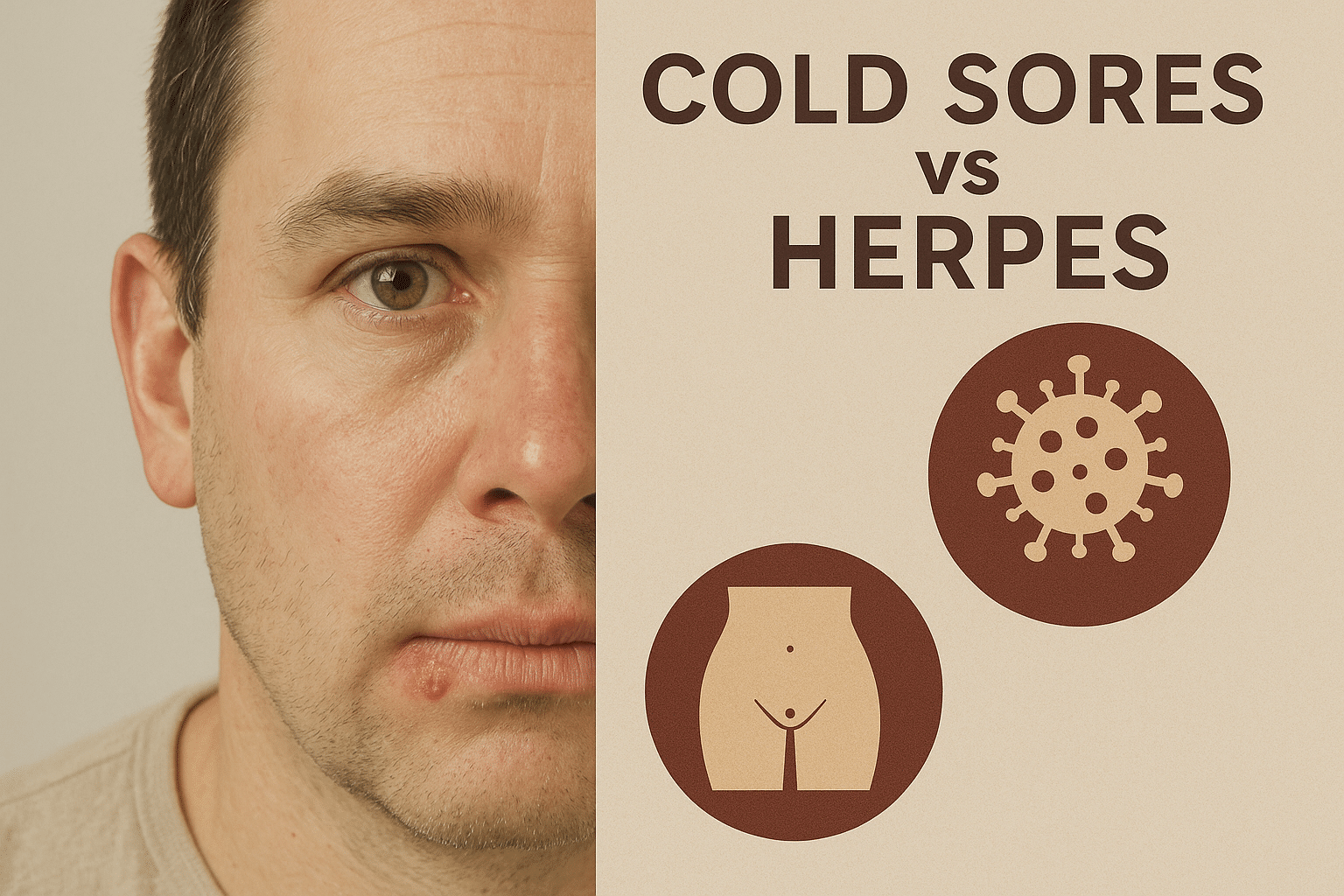


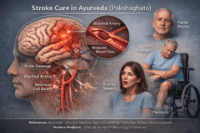
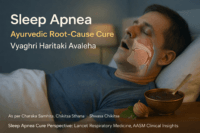
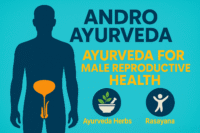
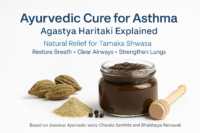
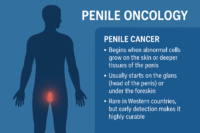
2 Responses
I took the information clear and the precautions i will follow them to keep my body safe from such diseases.thanks panaceayur
We’re truly glad to hear that you found the information clear and helpful. Following the right precautions is a powerful first step toward long-term health. If you ever need further guidance or support, we’re here to help you with personalized Ayurvedic care. Wishing you continued wellness and protection from all imbalances